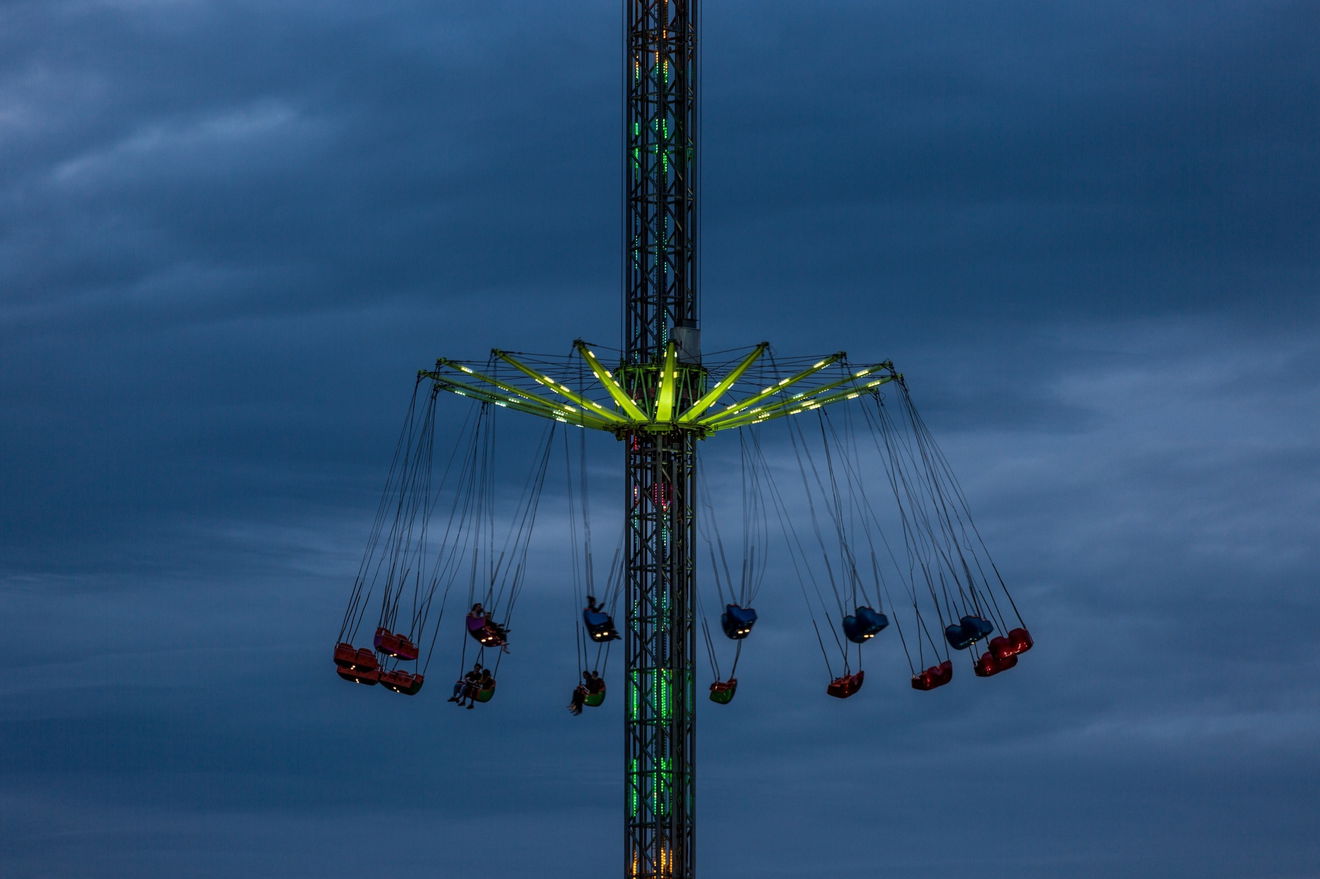The Hoppings

Do you love being swirled round on the waltzer 'til you're sick, or being spun upside down until your loose change jangles round yer ears, or drawn to the intense smell of burgers and the feel of hard hair where it's got stuck to your sugar dummy or become crunchy with candy floss? If all this floats yer shuggy boat, you must love The Hoppings!


Everybody loves the thrum of the fair from the mud clagged toddlers in buggies to the new romances of Town Moor teens. Who can say no to a hurdy gurdy?

The Hoppings is a big event in the North East with showmen travelling from all around the UK to set up rides, stalls and sideshows. It's said to be the biggest travelling fair in the world, possibly due to its location on Newcastle's Town Moor which is a field and a half!

Historically taking place during the last full week of June, the fair was originally seen as a temperance event to counterbalance the drink and baccy of Race Week, and the Pitmen's Derby. The moralistic meetings of the pious Victorians forbade the whiff of drink and expounded about the ills of booze, bad lads and wayward women! The festival was a teetotal alternative to the workers letting their hair down on their one week off!

So, in 1882 The Hoppings bouled onto the summer scene in Newcastle, with a whopping 150,000 visitors, though it was a very different set up with children's games, shot putt, running races, pole leaping, triple jump, running jump, tug-of-war, bar vaulting, bicycle races and skipping competitions for children. There was also a bit of military pageantry thrown in for good measure. The fair was held annually until a small hiccup in the weather meant that the land was damaged for grazing and from 1914 to 1922 a small fair was held in Jesmond Vale as an alternative.

In 1923 the Hoppings returned to the Town Moor and was held annually until the outbreak of the second world war during which time a smaller scale event was held on Exhibition Park over a longer six week period as part of Tyneside's Holiday at Home programme. People were encouraged to avoid taking trains to locations outside of their immediate surrounds. So the town was tops and the coast and countryside was a no!


The show returned to the Town Moor in 1947 after a brief stint at Saltwell Park but by the late 40's, Race Week was no longer a holiday for miners which saw a rapid decrease in the takings for showmen and the council who glean a large revenue each year from The Hoppings. The event was then held over a longer spell to compensate.

The 1950's was The Hoppings hey day with new rides and side stalls. The Rotor was introduced. A spinning wall where the floor came away. No floor? What more can you ask for?
Growing in size, advancing in technology and appealing to the masses, The Hoppings saw an all time high in people visiting in 1979 when it was estimated a whopping 1,250,000 people flocked to the Moor. That's a lot of toffee apples and coconuts.
The coming decade saw me, little Jos, brandishing a small bag, the proud owner of a fish (minus the chips)! My fairground trophy goldfish Victoria lasted ten years on me Mam's kitchen windowsill after a fortuitous and dexterous round of hook a duck!

No one's really sure about the origin of the name, but many people think it relates to dancing and the spectacle of events like the maypole or folk dancing. It's likely to derive from the Anglo Saxon term hoppen meaning funfair. In their 1827 Gazetteer of Durham and Northumberland, Parson and White outlined that the "Hoppings in Durham and Northumberland is a local term signifying a feast, merry-meeting, dancing or parish wake".


So during the summer, if you want to swelter on the helter skelter, take a whirl on the waltzer, or feel the wind in your hair hundreds of feet up in the air towering over the town, head to The Hoppings.
And Screeeeeeeeeeeeeeeeeeeeeeeeeeeeeeaaaaaammmmmmm if you wanna go faster!

Ant Photography thanks so much for the fantastic fairground photos!
For more information check out The Hoppings website built by the wonderful wayfresh.
